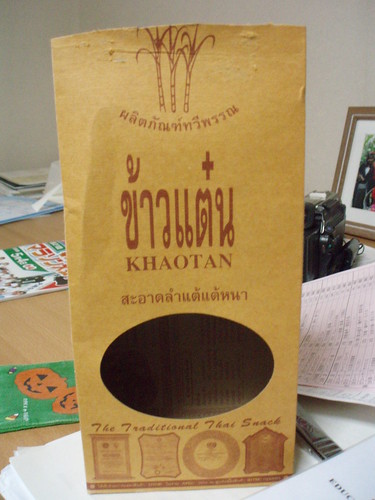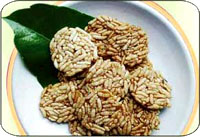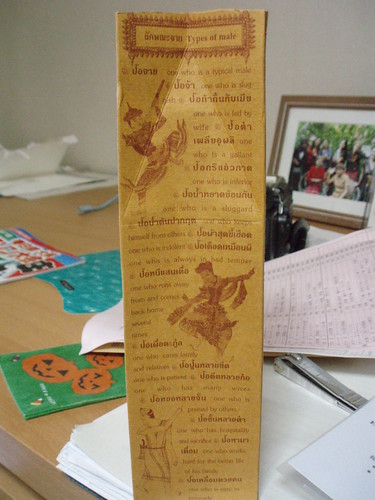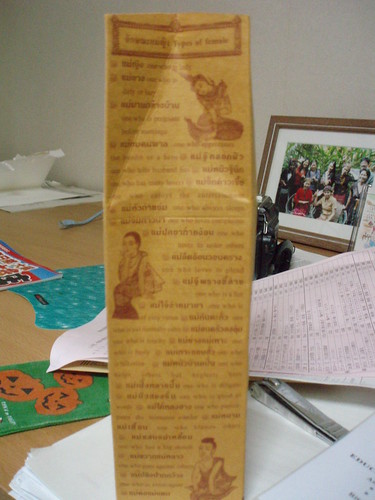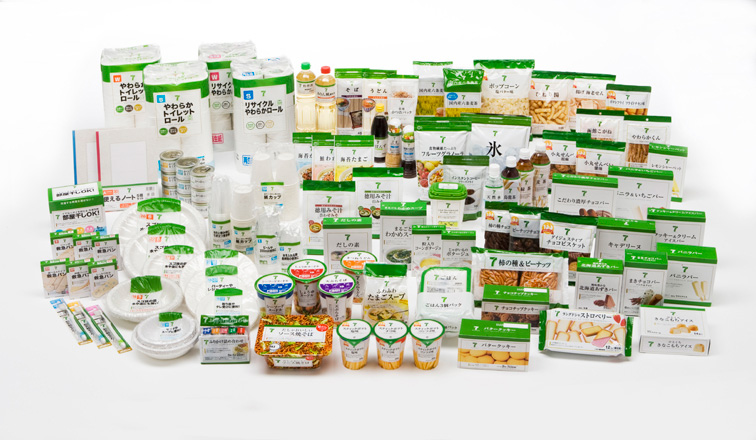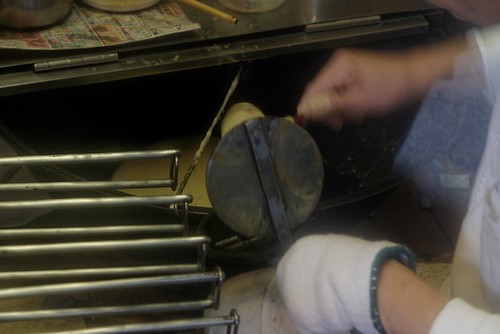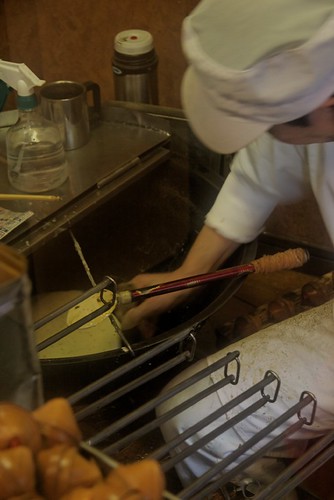A friend of Mrs. Adamu’s brought us these “Khaotan” puffed rice crackers – “the traditional Thai snack” according to the package. Unlike many Thai snacks, these were actually not too sweet. They had a more subtle flavor that complemented the taste of the crunchy rice without overwhelming it.
We ate all the actual crackers already (Mrs. Adamu was especially fond of them), so here’s a random picture from the Internet to show you what they look like:
Hailing from Lampang in northern Thailand, Khaotan is part of the “One Thambon One Product” (OTOP) program sponsored by JETRO, an organ of the Japanese government. JETRO provides funding and expertise to help local areas develop their products for export to places like Japan or New Zealand.
My favorite part of Khaotan was the extensive personality assessments on each face of the package. On the back is a chart of personalities based on the day of the week you were born (this day of the week system is pervasive among Burmese people as well), and a list of male/female personality types lines each side. The part about female personalities struck me as especially harsh – they have about twice as many different types as the men, but almost every type is just a different shade of dishonesty, vindictiveness, or irresponsibility. Just in case you can’t read the photos I will transcribe them for you:

The prediction according to the day of birth
Sunday: Smart at thinking and live happily until the end of life
Monday: Always cheerful and when death comes, one is supposed to be in heaven
Tuesday: Be brand and no fear of any danger
Wednesday: Clean and clear and can make dream come true
Thursday: Lots of properties and wealthy
Friday: Lots of fun till others envy
Saturday: No sad at all and has many followers
One who is a typical male
One who is slug
One who is fed by wife
One who is a gallant
One who is inferior
One who is a sluggard
One who keeps himself from others
One who is indolent
One who is always in bad temper
One who runs away from and comes back home several times
One who cares family and relatives
One who is patient
One who has many wives
One who is praised by others
One who has hospitality and sacrifice
One who works hard for the better life of his family
One who is easy to persuade
One who is lady
One who is dirty or lazy
One who is pregnant before marriage
One who appreciates the bandit as a hero
One who tells husband lies
One who has many lovers
One who enjoys the entertainment
One who always sleeps
One who loves complaints
One who loves to order others
One who loves to plead
One who is a liar
One who is of easy virtue
One who is too mentally calm
One who is touchy
One who is hasty
One who helps others but neglects her
One who is diligent
One who is good at words
One who participates the nonsense wander
One who blames others
One who has a big mouth
One who goes against others
One who is extravagant
One who is fierce

